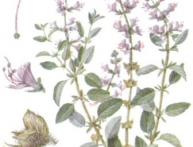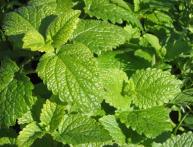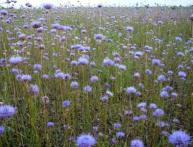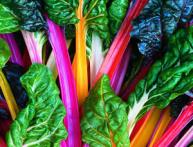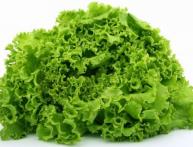Useful properties of thyme. Growing Thyme
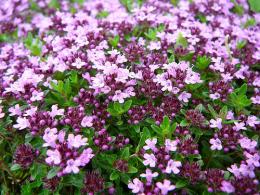
Thyme is known to many people as thyme. Many gardeners prefer not to collect this wild plant, but to grow it in their “medicinal beds.” Useful properties of thyme were known to the ancient Sumerians, who used it as an antiseptic. This plant is a perennial subshrub family of yasnotaceae. It contains thymol, which has antibacterial, antifungal and antioxidant effects. In folk medicine it is used for colds, heart and nervous system diseases, insomnia, peptic ulcers, and abdominal pain. Thyme also has a diuretic and expectorant effect. Regular tea with thyme will calm and lift your spirits and relieve fatigue.
Grow thyme not at all difficult, considering that it is drought and frost-resistant, resistant to pests and diseases. All that is important for him is good lighting and limed, fertile, light soil. It is easier to propagate thyme by cuttings, since its seeds are very small, approximately like strawberries. They need to be laid out on top of well-moistened soil in some kind of bowl and covered with glass or cellophane, creating a mini-greenhouse; shoots will appear in 8-20 days. When several true leaves appear, the plants are planted in separate containers and planted in a permanent place in the spring.
The beneficial properties of thyme are widespread also used in cooking. Young leaves and shoots of thyme have a specific taste; they are added to soups, salads, vegetable dishes, pickles and marinades. Thyme essential oil is used in cosmetology. Moreover, thyme blooms beautifully and is used for alpine slides and ridges. True, if you want to use thyme for medicinal or culinary purposes, then you need to collect and prepare it before flowering, in early summer.

